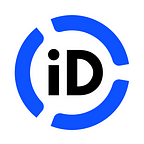At globaliD, our driving mission is to provide every individual an identity that they own and control — and one of our key insights is that this identity should be connected to a unique and universal name.
The early days of the internet was a mishmash of fragmented and isolated systems. In order to find something on the network, you needed to know its hard-to-memorize IP address.
One of the key innovations that made the internet more convenient, user-friendly, and universal was the development of the Domain Name System or DNS, which replaced those clunky IP addresses with easy-to-remember domain names.
In a sense, it made the internet more human.
It is perhaps no wonder that the resulting mainstream success of the Web in the 90s was dubbed the “dotcom bubble.”
You can probably see where we’re going with this.
Many of today’s digital identity systems are designed around cryptographic keys — much like the IP addresses of the early internet. In order for digital identity to take its next big step, it requires an innovation in the spirit of DNS.
Really, we need to make digital identity more human.
That’s why we developed the Identity Name System or INS.
Under INS, every individual or entity has a unique name that represents their identity, one that transcends national and corporate boundaries. Taken together, the pool of all registered names constitutes a global namespace for identity.
And while INS is a key tenet to the globaliD framework, its distributed nature means that no single entity controls it.
As such, INS is a public good, openly and equally accessible to all.
If you’d like to learn more, please check out our white paper: A Namespace for Identity
